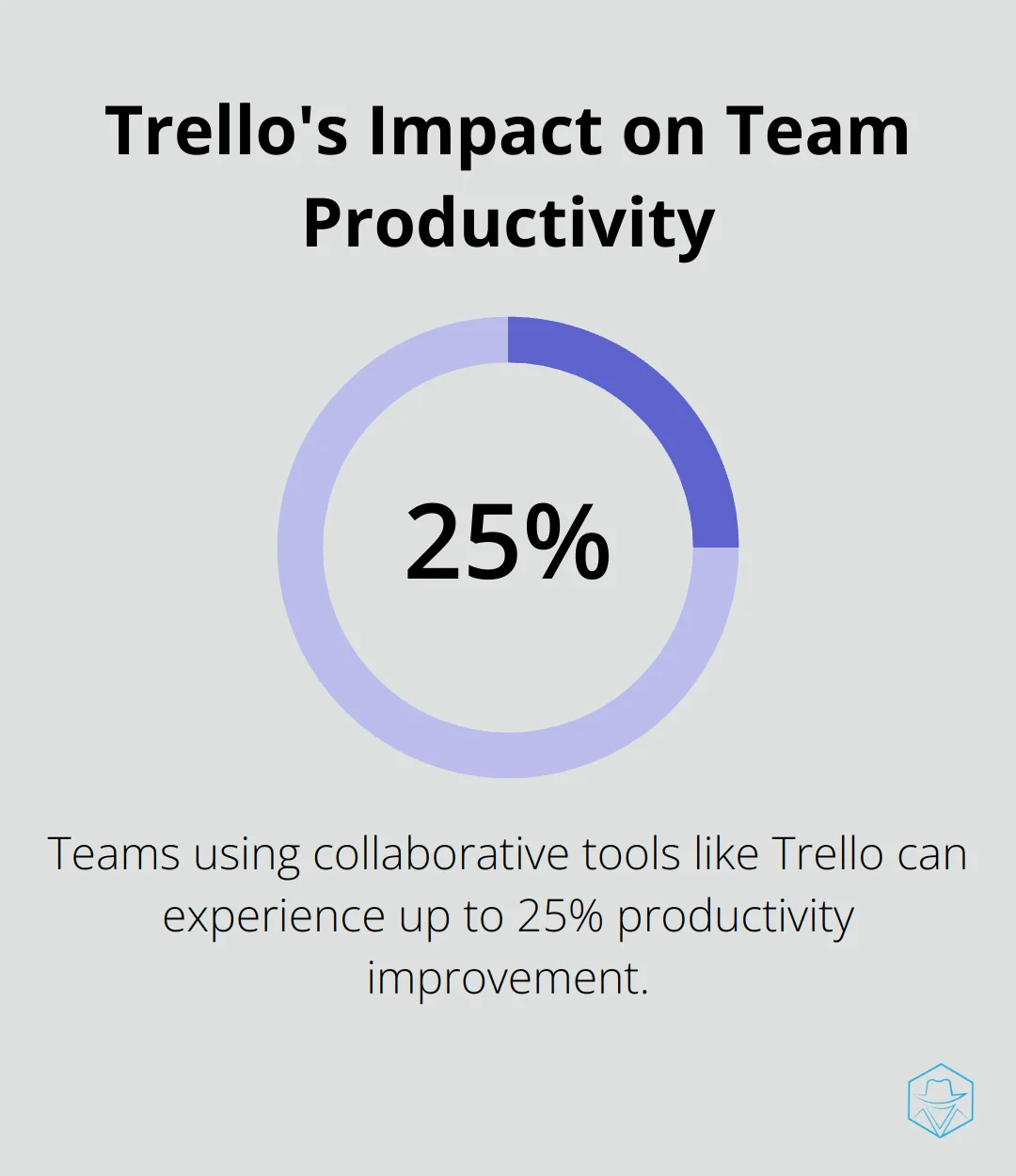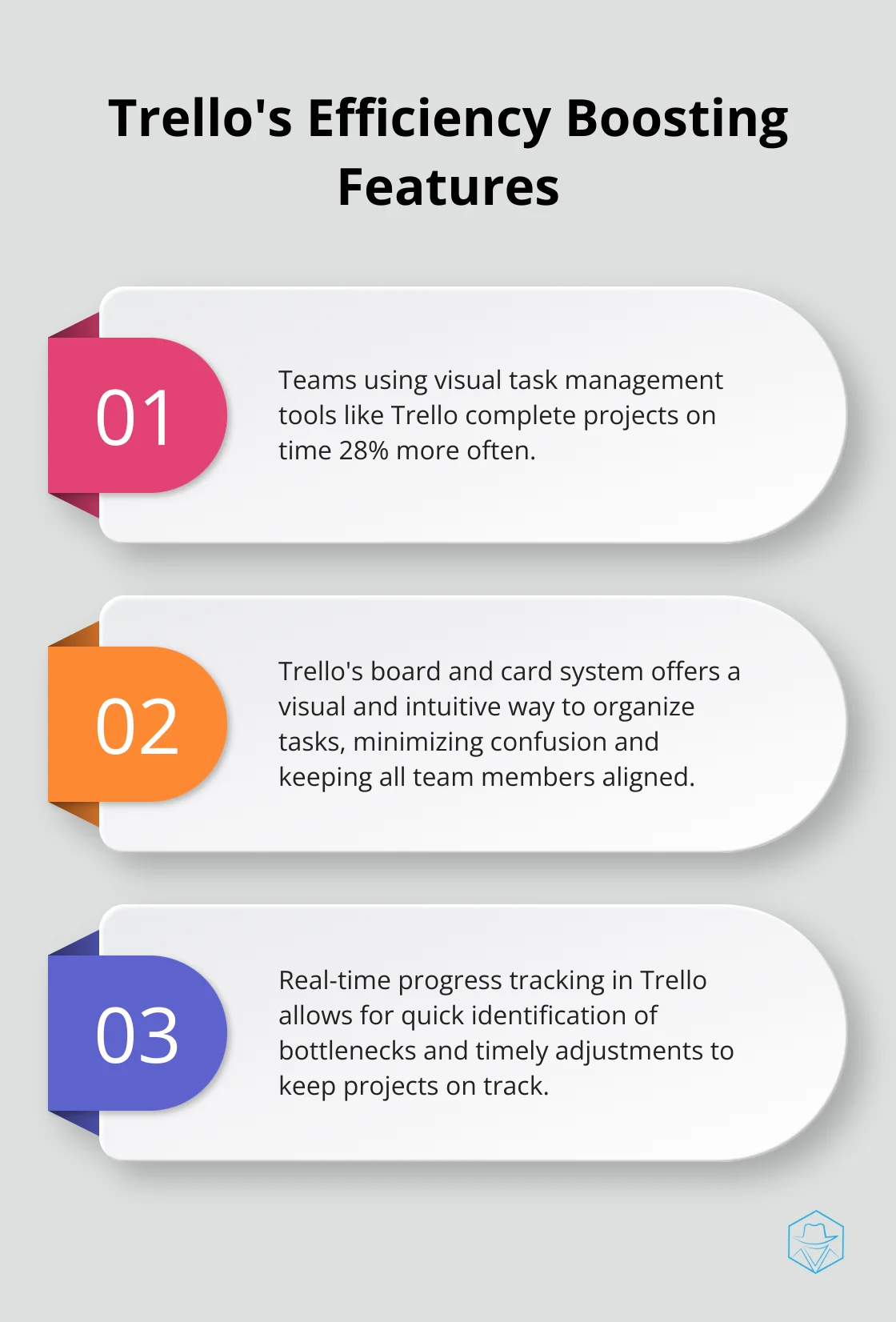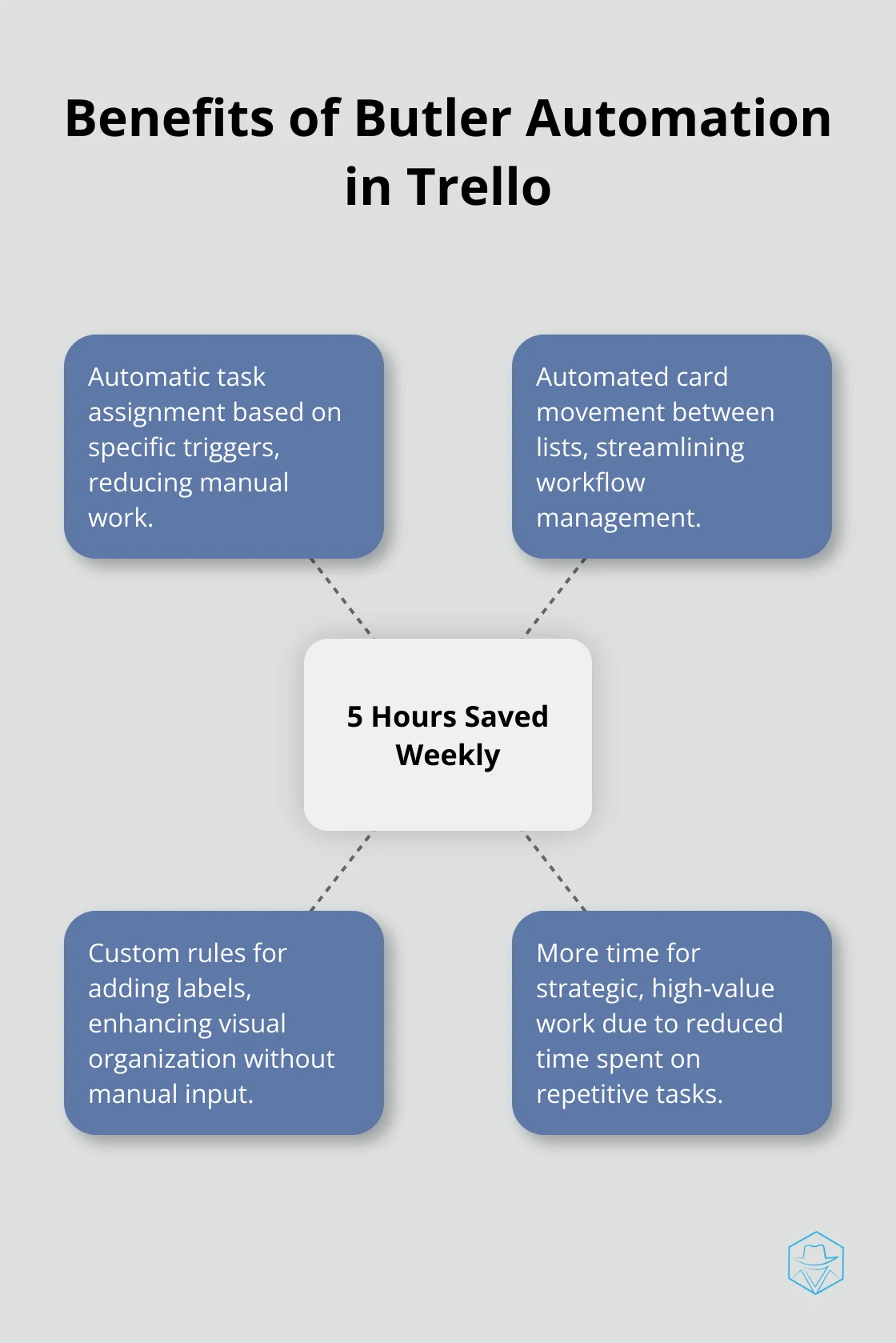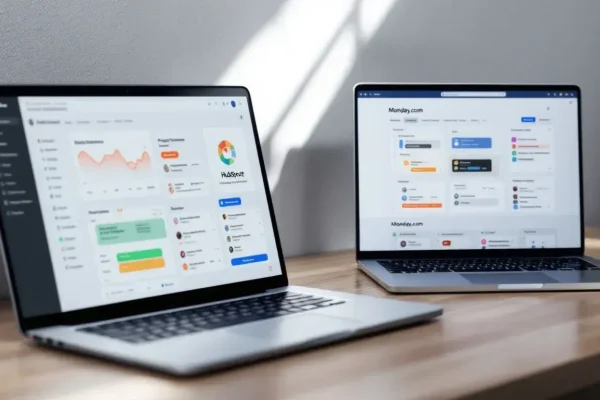Trello: The Ultimate Software for Project Management

At Drop Cowboy, we’re always on the lookout for tools that streamline our project management processes. Trello software for project management has caught our attention as a game-changer in the field.
This versatile platform offers a unique blend of simplicity and power, making it suitable for teams of all sizes and industries. In this post, we’ll explore Trello’s key features, how it enhances project management, and best practices for using it effectively.
What Makes Trello Stand Out?
Trello’s unique features have positioned it as a leading project management tool across various industries. The platform’s core strength lies in its visual board-and-card system, which replicates the familiar concept of sticky notes on a whiteboard. This intuitive approach allows users to quickly grasp the platform’s functionality and start organizing tasks immediately.
Flexibility in Workflow Design
Trello’s adaptability to different workflow styles sets it apart. Users can create custom lists within boards to represent various stages of a project (e.g., “To Do,” “In Progress,” “Review,” and “Done”). This flexibility enables teams to tailor their Trello boards to match their unique processes, whether they follow Agile methodologies or prefer a simple task list.
Seamless Collaboration Features
Trello excels in promoting team collaboration. The platform allows users to assign tasks to team members, set due dates, and add comments or attachments to cards. Real-time updates ensure that everyone stays informed, reducing the need for constant status meetings. A study by McKinsey found that teams using collaborative tools like Trello can experience productivity improvements of up to 25%.

Powerful Integration Capabilities
While Trello is robust on its own, its true power emerges through its ability to integrate with other tools. With over 200 integrations available, teams can connect Trello to their existing tech stack, streamlining workflows and minimizing context switching. Popular integrations include Slack (for communication), Google Drive (for file sharing), and Jira (for more complex project tracking).
Automation with Butler
Trello’s automation feature, Butler, deserves special mention. It allows users to create custom rules and commands that automate repetitive tasks. For instance, Butler can automatically assign a team member to a card when it moves to a specific list or create recurring tasks for regular team meetings.
While Trello offers a comprehensive set of features, some teams might find platforms like Drop Cowboy more suitable for communication-heavy projects or campaigns that require advanced personalization and tracking capabilities. The choice between Trello and Drop Cowboy (or other project management tools) often depends on the specific needs and goals of the team or organization.
As we explore Trello’s features further, it becomes clear how this versatile tool can enhance various aspects of project management. Let’s now examine how Trello specifically improves task organization, communication, and overall project efficiency.
How Trello Boosts Project Efficiency
Streamlined Task Management
Trello’s board and card system offers a visual and intuitive way to organize tasks. Users can drag and drop cards between lists, which instantly updates task status. This visual approach minimizes confusion and keeps all team members aligned. A study by the Project Management Institute reveals that teams who use visual task management tools (like Trello) complete projects on time 28% more often than those who don’t.
Enhanced Team Communication
The comment feature in Trello allows team members to discuss tasks directly on the relevant card. This centralized communication reduces email clutter and ensures all project-related discussions remain easily accessible. Users can @mention team members to notify them of updates, which promotes quick responses and decision-making.
Real-Time Progress Tracking
Project managers can obtain a bird’s-eye view of project progress at any time with Trello. The platform’s various views – including board, calendar, and timeline – allow teams to visualize project status in different ways. This real-time tracking capability helps identify bottlenecks early, which allows for quick adjustments to keep projects on track.

Customizable Workflows
Trello’s flexibility allows teams to create workflows that match their unique processes. Whether a team uses Agile, Kanban, or a custom methodology, Trello adapts to their needs. This adaptability proves crucial for maintaining efficiency across different project types and team structures.
Powerful Integrations
Trello’s ability to integrate with over 200 third-party apps (such as Slack, Google Drive, and Jira) amplifies its efficiency-boosting potential. These integrations allow teams to connect Trello with their existing tech stack, which streamlines workflows and minimizes context switching.
While Trello offers these powerful features, projects that focus heavily on personalized communication campaigns might benefit more from specialized tools like Drop Cowboy. Drop Cowboy’s platform provides unparalleled capabilities for creating and delivering personalized messages at scale, which can revolutionize certain types of projects.
As we explore the best practices for using Trello, you’ll discover how to maximize these efficiency-boosting features and create a streamlined project management process that works for your team. Some project management tools claim their automation tools can save teams up to 40% of their time spent on manual work, which can be particularly useful for complex projects.
How to Maximize Trello’s Potential
Craft a Clear Board Structure
Create a board structure that mirrors your workflow. A typical project board should include lists for “Backlog,” “To Do,” “In Progress,” “Review,” and “Done.” This clear structure helps team members quickly understand the project’s status and their responsibilities.
Add a “Resources” list at the start of your board to store important project documents, guidelines, or templates. This centralized location for key information saves time and reduces confusion.
Use Labels and Due Dates Effectively
Trello’s color-coded labels improve visual organization. Assign different colors to represent priorities, departments, or project phases. For example, red could indicate high-priority tasks, while green might represent marketing-related items.
Set realistic deadlines and use Trello’s calendar view to get a bird’s-eye view of upcoming tasks. A study by the Harvard Business Review found that teams who consistently use due dates in project management tools (like Trello) see a 30% reduction in missed deadlines.
Automate Tasks with Butler
Butler, Trello’s built-in automation tool, can save your team significant time. Set up rules to automatically move cards between lists, assign team members, or add labels based on specific triggers. You could create a rule that automatically adds the “Review” label and assigns a specific team member when a card moves to the “Review” list.
A Trello survey revealed that teams using Butler automation save an average of 5 hours per week on repetitive tasks. This time savings allows team members to focus on more strategic, high-value work.

Conduct Regular Board Reviews
Schedule weekly or bi-weekly board reviews to keep your Trello workspace organized and relevant. During these reviews, archive completed cards, update task statuses, and reassess priorities. This practice ensures that your board remains an accurate reflection of your project’s current state.
Encourage team members to participate in these reviews. Their insights can lead to process improvements and help identify potential bottlenecks before they become issues.
Consider Specialized Tools for Specific Needs
While Trello offers robust project management capabilities, specialized tools might be more suitable for projects focused on personalized communication campaigns. Drop Cowboy’s platform excels in creating and delivering personalized messages at scale, which can revolutionize certain types of projects.
Try to tailor these practices to fit your team’s unique needs and workflow. The key lies in finding the right balance between Trello’s versatility and your project’s specific requirements.
Final Thoughts
Trello software for project management offers a powerful blend of simplicity and versatility. Its intuitive board-and-card system, customizable workflows, and robust collaboration features streamline project management processes for teams of all sizes. Trello’s flexibility allows it to adapt to various methodologies, while its integration capabilities (with over 200 third-party apps) extend its functionality seamlessly.
We recommend Trello for many project management scenarios. However, for projects that heavily rely on personalized communication campaigns, specialized platforms like Drop Cowboy might prove more suitable. Drop Cowboy excels in creating and delivering personalized messages at scale, which can revolutionize certain types of projects.
To maximize Trello’s potential, create a clear board structure, use labels and due dates effectively, and leverage Butler for task automation. Regular board reviews will help maintain an organized and relevant Trello workspace. The best project management solution depends on your specific needs, project types, and team dynamics.
blog-dropcowboy-com
Related posts

May 6, 2025
HubSpot or Monday: Which Project Management Tool?
Compare HubSpot vs Monday for your project management needs. Discover features, ease of use, integration, pricing, and find your perfect tool.

April 22, 2025
Salesforce and Marketing Automation: Perfect Synergy
Explore how Salesforce and marketing automation unite to boost efficiency, nurture leads, and enhance sales strategies for your business success.

August 4, 2025
Why does my phone keep going to voicemail
Learn why does my phone keep going to voicemail and explore solutions to fix it with practical tips. Avoid missed calls and improve connectivity.

June 23, 2025
Voice Dialer: Hands-Free Calling Made Easy
Explore hands-free calling with a voice dialer phone. Learn how this tech simplifies your life with seamless, efficient communication.

April 9, 2025
How AI Enhances Marketing Automation Strategies
Boost marketing automation with artificial intelligence to streamline campaigns, enhance customer engagement, and improve overall business efficiency.

April 17, 2025
Designing Effective Marketing Automation Workflows
Boost conversions with a smart marketing automation workflow. Discover strategies and tips for designing optimized, efficient workflows today.